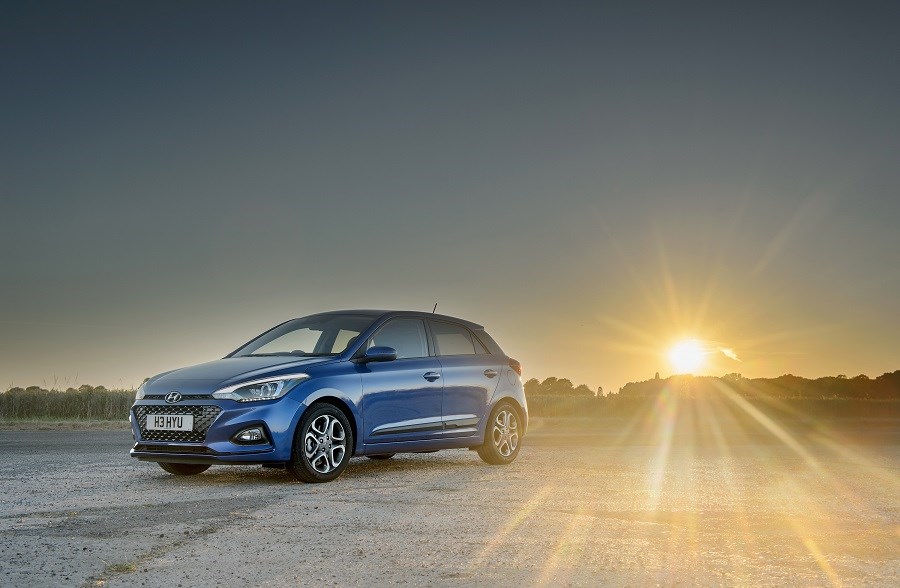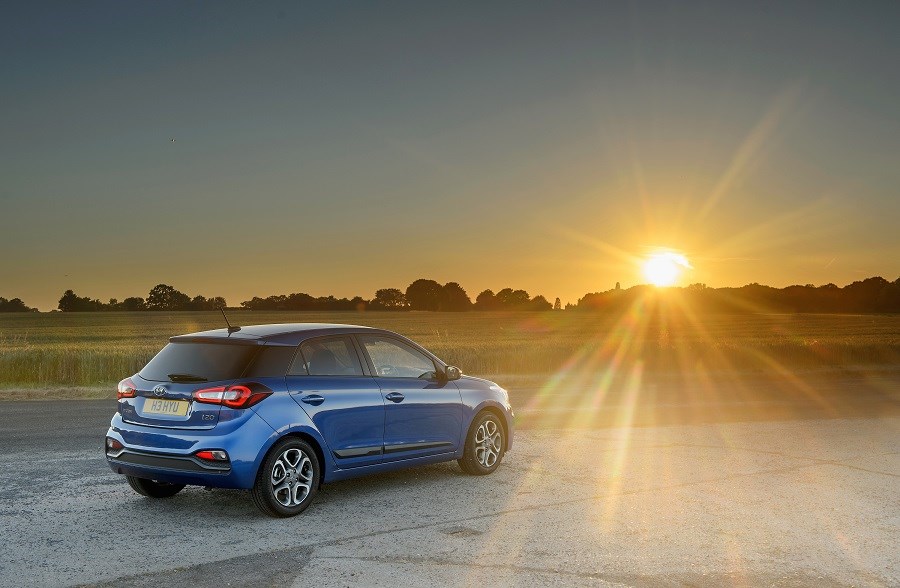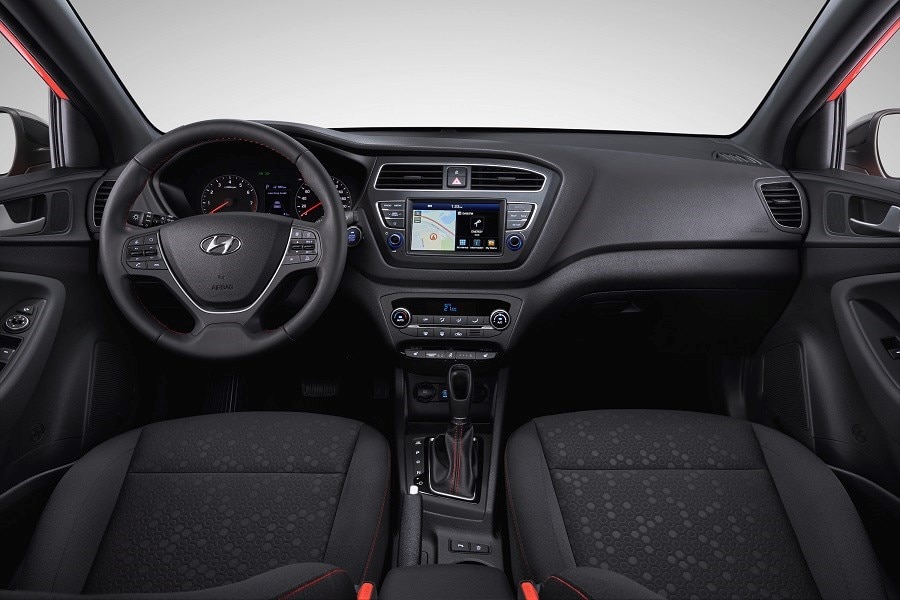Model Review
The i20 is a nameplate that has been part of the Hyundai range for over a decade and was one of the first cars to be entirely developed at its European Research and Development Centre in Russelsheim, Germany.
The facility is a stone’s throw from Vauxhall-Opel’s German head office, so it’s probably more than a coincidence that the first iteration of the model looked extremely similar to the Vauxhall Corsa.
Despite being quite ordinary, that car remained on sale for six years, replacing the Hyundai Getz and giving the Korean firm a real foothold in the supermini market, upon which the current i20 builds.
The latest model was launched in 2014 and was a much bolder piece of design than the first i20, with a floating roof, bolder styling and a significantly improved interior.
In 2018, the range was given a mid-term facelift, with subtle changes to the front end styling and an upgraded infotainment package. The diesel models were dropped at the same time due to slow sales, leaving a choice of two petrol engines in the i20 line-up.
Latest model
Although the i20 was given a facelift in 2018, the differences between old and new require a trained eye as it’s difficult to tell them apart.
Both the front and rear bumpers are different, with the front end getting Hyundai’s signature ‘cascading grille’, while it also gets bold LED daytime running lights.
The back bumper has also been altered, while the rear lights have been redesigned with included LEDs and a slightly more angular dynamic.
The most significant changes are in the technology, though. The i20 features Hyundai’s SmartSense driver assistance features, including lane-keeping assist, autonomous emergency braking, driver attention alert and high beam assist, while the infotainment interface is also new and state-of-the-art.
Much of the cabin remains otherwise unchanged, although there are a few subtle trim and detail changes over the outgoing model.
Value for money
At first, the i20 doesn’t look like terrific value for money.It kicks off at £13,995, which is quite a lot for an entry-level supermini.
But if you look at the spec, you’ll see that it stacks up very well against rivals. Hyundai offers a comprehensive package of standard equipment on every model, including the base S Connect spec, leaving the smaller i10 to compete against other manufacturers’ entry superminis.
Buy an i20 and you get a mature car with loads of standard equipment, along with striking good looks, decent performance and a comprehensive five-year warranty. It’s better value - at list price at least - than a Ford Fiesta or Volkswagen Polo with comparable levels of standard equipment.
Where it looks less like value for money, though, is at the top of the range. The range-topping Premium SE Nav costs over £18,500 - that’s a lot of money for a Korean supermini…
Looks and image
Gone are the days when a Hyundai was a bland looking car there to simply do a job. The company’s latest model range is getting more handsome by the day, and the i20 is genuinely one of the best looking superminis on the market right now.
The angular headlamps, sculpted bonnet, mesh grille and and distinctive wedge-shaped swage line down the sides give it a purposeful appearance, helped by the facelift model’s LED light features which really help to keep it modern and up-to-date.
Handsome as it may be, the Hyundai badge still doesn’t have the cachet of some of its rivals, but because of that, the company has loaded the i20 with tech in order to tempt younger buyers especially into its showrooms. Even the base model gets an seven-inch touchscreen with Apple CarPlay and Android Auto mirroring, for example, while the safety technology is among the absolute best in the supermini class, with only the Nissan Micra and new Ford Fiesta coming close on driver assistance kit, and at a higher price point.
Space and practicality
The i20 is one of the most spacious superminis on the market with comfortable seating for four adults and class-leading headroom for rear seat passengers.
It’s practical, too, with a 310-litre boot that incorporates a removable floor - you can choose between a flat load bay for day-to-day use, or extra space if you need to carry larger luggage.
Equipment levels are impressive, though some of the cabin plastics lag behind some of the model’s European rivals in terms of their overall quality - they’re hard and scratchy, while some of the controls such as the indicator stalks don’t feel as well damped as other cars in the class.
That said, the touchscreen infotainment system is intuitive to use and extremely user friendly, while also looking suitably upmarket and high tech.
The cabin comfort is complemented further by the car’s impressive ride comfort, which is one of the smoothest in the class. It’s not overly firm like many, and rides like a much bigger car - though this means it’s not the sharpest small car in terms of dynamics. Most buyers won’t care.
Engines
There is a choice of two petrol engines in the i20, but no diesel as the 1.4 CRDi unit was dropped in early 2018 due to a lack of demand.
The entry-level engine is a 1.2-litre unit, available in two states of tune - either 74bhp or 83bhp. Both are coupled to a five-speed manual gearbox.
The flagship engine is a turbocharged 1.0-litre T-GDI unit, which is offered with either a manual or a seven-speed dual-clutch automatic transmission, and again has two power outputs - 98bhp and 118bhp.
The former comes with a five-speed manual as standard and the latter a six-speed, while the auto is only available with the lower powered engine.
With the manual gearbox, both are good fun to drive, but the auto has a slow and unusual shift pattern, which tends to dilute the driving experience.
Running costs
Running costs are sensible across the board, but the 1.2 litre engine is relatively high no emissions, with 126g/km of CO2. That hardly puts it into an expensive tax bracket, but the 1.0 litre with 114g/km is a cheaper option in terms of both road tax and overall fuel economy.
The 1.2 will return a quoted 51.4mpg on the combined fuel economy cycle and the 1.0T 56.5mpg, or 54.3mpg if equipped with the automatic transmission.
Things to look for
The current i20 is a bit new to throw up any major problems, but the previous model had two well-known faults that you ought to keep an eye out for, just in case. The first was loss of power steering, due to the electric motor overheating, while the second was failure of the folding key mechanism, which could well manifest itself with lower-spec versions of the current car, which have the same key.
Rivals
There’s a plethora of choice in the supermini market, so it frequently comes down to who’s offering the best deal rather than the best car. There are some exceptional candidates - the Ford Fiesta and VW Polo being served class leaders - but the others (i20 included) are much of a muchness.
It’s a better car than the Vauxhall Corsa, Peugeot 208 or Citroen C3, and a comparable alternative to a Kia Rio, Nissan Micra, Toyota Yaris or Suzuki Swift.
Depreciation
The i20 holds its value well - expect it to retain between 38 and 43 per cent of its value after three years depending on trim level.
The five year warranty is a big help here, as it’s transferable between the first and second owners.





